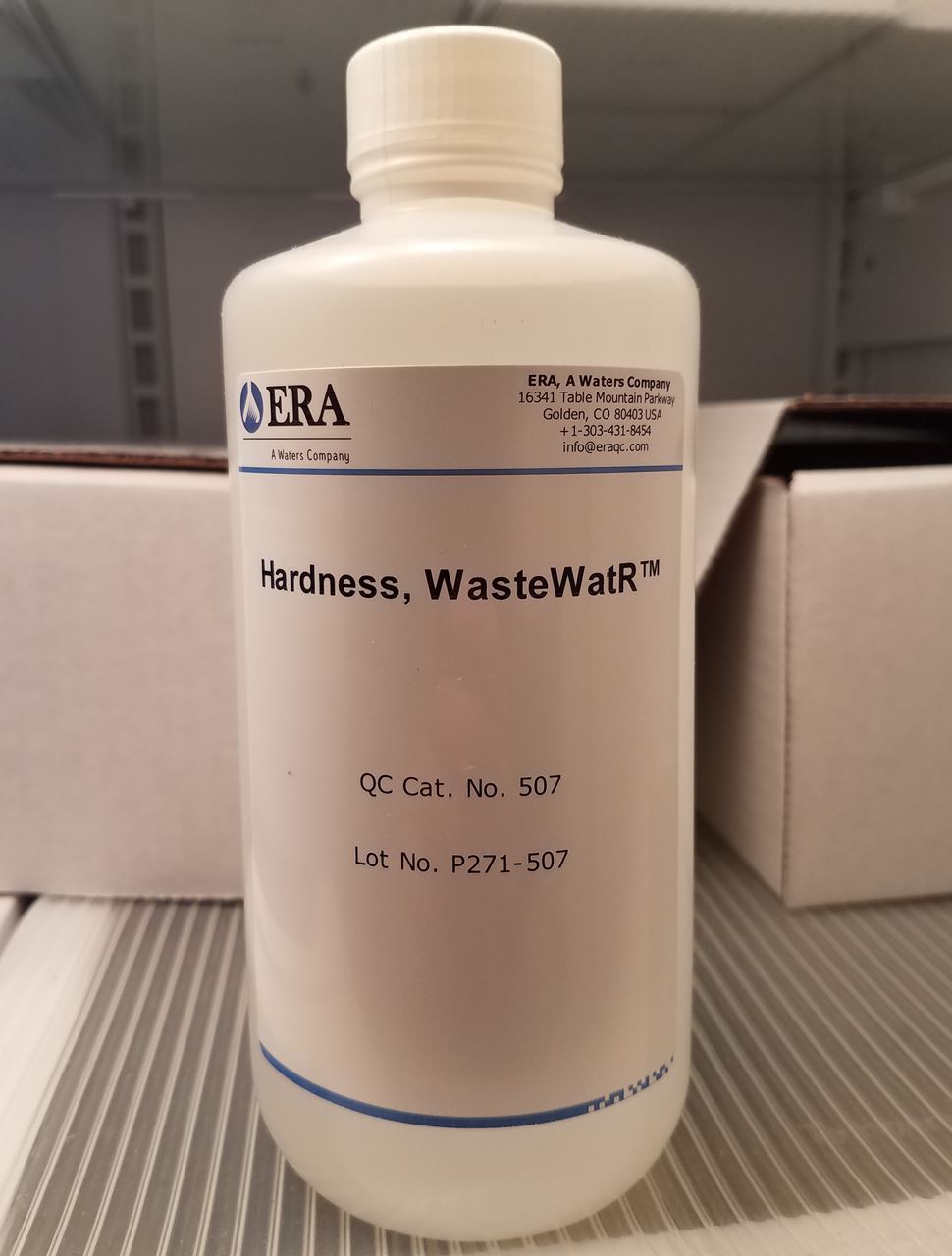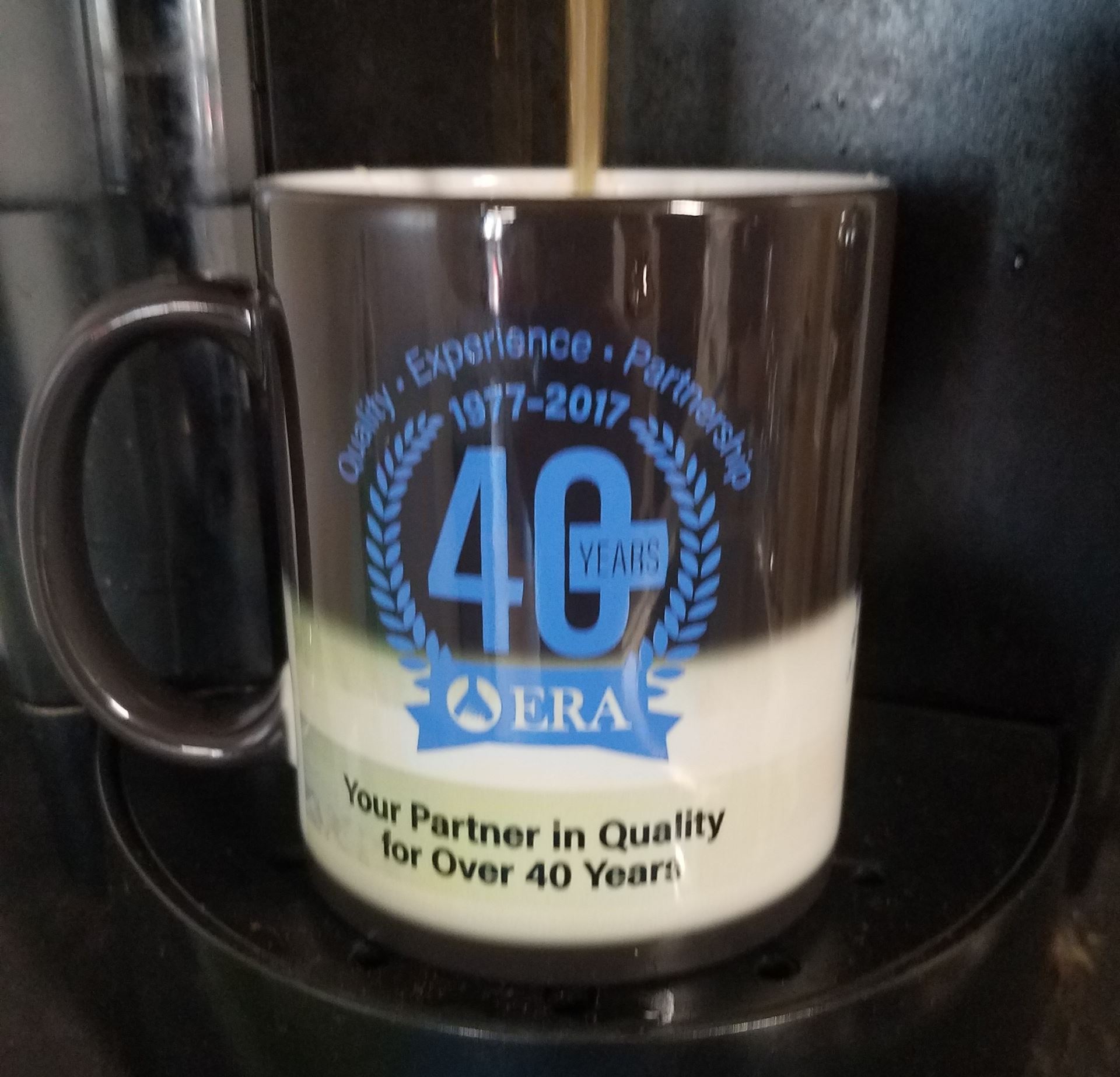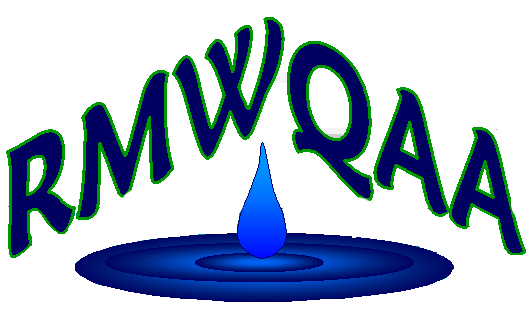To kick off 2019, RMWQAA was pleased to sponsor a tour of the ERA lab in Golden, Colorado. Tucked up aside one of the many beautiful hills that dot the Front range, about 18 people were treated to an inside look at a premier proficiency testing laboratory. ERA was founded in 1977 in Chicago, Illinois by a pair of cousins who were also prominent members with Test America and Colorado Analytical. ERA was acquired in 2006 by Waters Corp, the worldwide leader in liquid chromatography, mass spec, and thermal analyses. Waters Corp now houses the lab we were visiting on the 9th of January, where they have been located since 2011.
After a quick introduction to our tour guides Daniel, Colleen, and Curtis and an emergency exit protocol reminder, we were off in groups of 5 or 6 to check out the lab and surrounding offices. Being the largest proficiency testing company in the U.S. requires quite a large lab and a hefty workforce to go with it. This was apparent when we were shown to the laboratory, where nearly half of ERA’s 86 employees work. The lab is split into sections, with an inorganic side and an organics side. The inorganic side is responsible for much of the proficiency testing and quality control work. They also run IC and mercury analyses, as well as TOC and conductivity for ultra pure water systems. To the side and in a separate room is where they work with their soil samples. It was interesting to find out later on that they typically collect enough soil to work with the same batch for 6-7 years.
On the opposite site of the lab we found organics analyses being performed. These included radio-chem testing, gas and liquid chromatography, and a separate room for microbiological testing. This side of the lab was also where Waters Corp employees did work with their standards and reagents. Just outside the laboratory we found the shipping department, a highly organized and well-oiled machine of a workforce. Even in January they were already prepared to ship hundreds of orders and prepare thousands

more! I couldn’t exactly pinpoint their method of organization, but it was clear they knew what they were doing and where every item could be found!
As we looped back towards the start of the tour, we were introduced to the various customer service teams at ERA. The IT department consisted of 5 individuals, highlighted by Harlan, who was responsible for creating the eDATA platform that ERA and its customers use to analyze data. This was implemented in 2015 and is an impressive piece of programming worth digging into! Next to the IT department was a group of 8 people who handle the large volume of calls and e-mails received nationally and internationally. Between them they typically take over 200 calls per day! The remaining positions taken in the customer service department of ERA were the 3 individuals who communicate with state and regulatory bodies, check data for accuracy, and handle reports. In 2014 Waters ERA established a 2-day turn around for final study reports following the end of a PT run. These three people manage to double check reports and data for errors AND get the reports sent out quickly. Clearly the 12-15 years of experience, on average, between the three of them has produced some high quality work!
The tour concluded with a walk through the main room, where it was pointed out that each of the conference rooms were named for elements. Meeting in the Hydrogen room, ASAP! Once we settled into the original meeting room with some cookies to snack on, we were treated to a solid Q&A session with five prominent members of the ERA staff. Between Tom, Curtis, Mike, Tom, and Brian we attempted to gain all the insight from the decades of experience standing before us. While we weren’t able to acquire the answers to this years DMRQA’s (sorry all), we did find out a couple of interesting bits of information:
-Most, if not all of the customer service department teams also have Biology or
Chemistry degrees, and typically everyone began work in a lab prior to joining their team.
-ERA handles over 600,000 individual data points each year.
-If you are looking to receive a proficiency test for a certain analyte and it isn’t available, chances are not enough labs are looking to participate in the same test. It takes 15-20 labs in order for ERA to develop enough quality data to permit sending proficiency testing materials for a certain test. Some labs running the more obscure analyses may have to look elsewhere or talk some other labs into requesting some proficiency testing.
-Ever wonder what the most failed DMRQA analysis is? Surprisingly it’s pH!! Due to the sheer volume of data points taken, the high confidence level on QC for pH correlates to a range much smaller than other tests. Flip that and look at the least failed DMRQA: BOD! With the widest range of acceptable values, this test tends to hit most often, though that still doesn’t seem to make the BOD setup any less stressful.
 Thanks to all of the people involved in putting this tour together as well as those employed by ERA in helping create accurate QC and PT data! Personally, I walked away with a great amount of respect for the process that goes into creating our proficiency tests that we rely on to prove our accuracy to the state, and really enjoyed touring Waters’ ERA facility! They also sent us home with a sweet color changing mug, some always needed pens, and a flash drive for all those data points!
Thanks to all of the people involved in putting this tour together as well as those employed by ERA in helping create accurate QC and PT data! Personally, I walked away with a great amount of respect for the process that goes into creating our proficiency tests that we rely on to prove our accuracy to the state, and really enjoyed touring Waters’ ERA facility! They also sent us home with a sweet color changing mug, some always needed pens, and a flash drive for all those data points!
*Photos were not allowed to be taken in the lab, my apologies for the lack of pictures to go with the newsletter*
Tyler Eldridge has a BA in Biology from CSU. He is a Water Quality Analyst for the City of Greeley, volunteers for the RMWQAA, and maintains the RMWQAA website.

